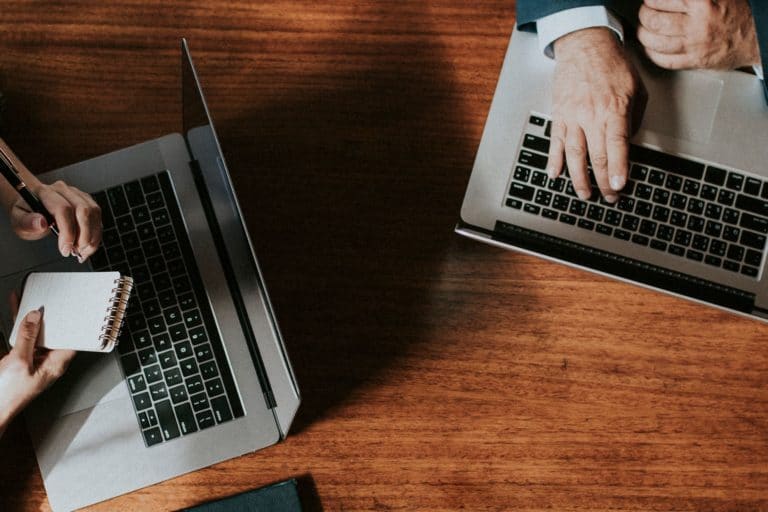
Key Points
- We recommend saving at least six months worth of living expenses in your emergency fund.
- Building an emergency fund is a critical step toward protecting you and your family from emergencies.
- A high-yield savings account or money market account is the best place to store your emergency fund.
You may not always have extra money budgeted to handle life’s unexpected events. That’s why having an emergency fund is crucial. By having one set in place, you can avoid getting into debt using credit cards and loans to cover emergencies.
You’ll also have peace of mind knowing that if anything were to take a turn, you’d have the funds available to handle it. Building a dedicated cash reserves is an important step in keeping you and your family safe.
Today, you’ll learn exactly how to start building your own emergency fund.
7 easy steps to start and build an emergency fund:
- Decide how much you want to save
- Create a plan with goals
- Choose a place to keep your emergency fund
- Automate your savings
- Use apps to help you save without thinking about it
- Find ways to boost your savings
- Monitor your emergency fund
1. Decide how much you want to save
You first have to decide how much it is you want to save. We recommend starting with saving for three months worth of living expenses. If you want to save more, you can once you’ve met the three-month milestone.
When deciding how much you want to save, you must be realistic with your monthly expenses. This means you shouldn’t just come up with an estimate of how much you spend each month, but instead look at the real numbers.
Download or print out your bank or credit card statements and go through the last three months worth of expenses. Add all three totals up from each month, and divide that number by three. This will give you an average, which can act as the number you will use when deciding how much you want to save for an emergency fund.
2. Create a plan with goals
Without a plan, you are just guessing. And without goals, you have no target. When saving for your emergency fund, it’s crucial you set up a plan of action that will help keep you on track throughout the process.
It will be equally important to set goals for yourself to stay motivated along the way. When setting your goals, try to make them realistic and achievable. For example, imagine you have a goal of saving $9,000. And let’s say, hypothetically, you earn $2,500 per month at your job. It wouldn’t be reasonable to set a goal to save $9,000 in two months because you don’t even earn that in three months.
Set achievable goals and take them one day at a time. Create a plan, and stick with it. Your plan may include cutting a night out to the bar each month, and by doing that, you can save an extra $100 each month.
Perhaps you find yourself splurging at Target every once in a while, and by removing the unplanned spending, you could save an extra $200 per month. These are simple changes that are part of your plan, and if you stick with them, you’ll achieve your goals faster.
3. Choose a place to keep your emergency fund
We went over the best places to keep your emergency fund earlier, so if you haven’t read that part, we recommend going back. However, we’ll also briefly go over them here.
For starters, you want to keep your emergency fund in a transactional account. In other words, a savings account or something equivalent. Three great examples of this include a high-yield savings account, money market account, and certificate of deposit (CD).
All of these accounts also happen to be FDIC insured and have above average APY, which is why we would recommend any of them as a place to save your emergency fund.
4. Automate your savings
Automating your savings can increase the amount of money you save within a shorter time frame. The problem with manually moving money from your checking to your savings account is that the process can be time-consuming, inconsistent, and emotionally taxing.
By automating the process, you eliminate most of the friction that comes with manually making the transfer. Take advantage of tools that your bank offers, such as scheduled transfers. You can also split your direct deposit into two different bank accounts—your checking and emergency fund savings.
5. Use apps to help you save without thinking about it
You can use apps to help you save money without ever lifting a finger. Apps such as Acorns, Stash, and Qapital all have an abundance of features that help you save by automatically moving pennies into a designated savings account.
For example, Acorns has a feature called Round-Up. Every time you make a purchase, Acorns will round-up your purchase to the nearest dollar and move the difference into a savings account.
With Qapital, you can set custom trigger events to have Qapital move money into your savings every time you trigger an event. For example, you can have money automatically saved every time you post on Facebook, like a YouTube video, or reach your fitness goal on your Fitbit.
There’s a lot more you can do with these apps. Take a look at our reviews for the best apps to help you save for your emergency fund:
6. Find ways to boost your savings
There are other creative ways you can boost your savings and increase your emergency fund. For instance, you can save money on your everyday shopping by taking advantage of savings and coupon apps such as Ibotta and Honey,
By saving money on your everyday expenses, you can move those savings into your emergency fund and build it faster.
There are a handful of great saving and coupon apps available for free:
7. Monitor your emergency fund
When starting and building your emergency fund, you should take time to monitor and track your progress. This means maintaining your emergency reserves at or above the required level. If you saved three months’ worth of living expenses, your emergency fund should also stay at that level or above.
For example, if you had to draw from your emergency fund because your car’s timing belt broke, you should build your fund back up to the previous level before withdrawing from it.
What is an emergency fund?
An emergency fund is money that you set aside to save for emergencies. An emergency is anything that happens to you that is unexpected, such as:
- Surprise unemployment
- Major car repairs
- Major home repairs/replacements
- Medical expenses
- Computer replacement
All of these are things that could cost you thousands of dollars. And unless you have that money on hand, you’ll likely need to pull it from an outside source, preferably an emergency fund.
Why do I need an emergency fund?
You need an emergency fund because life is full of surprises (and not always the good surprises). You’ll inevitably find yourself in a situation where you have to come up with a lot of money in a short period of time. The last thing you want to do is depend on loans and credit cards to pay for all your emergency expenses.
For example, let’s say your car’s timing belt breaks—that’s a $600 repair depending on your vehicle. Or perhaps you drop and break your $2,000 work laptop and have to replace it. Where will you get the money for these expenses?
Most Americans would resort to taking out a loan or using a credit card. Both of these options are not ideal because they add unnecessary interest on top of the existing expense. For example, let’s say you have to buy a $2,000 laptop using a credit card with a 15% APR. Let’s also say it takes you two years to pay off the $2,000 debt. After two years, you’ll have paid about $370 extra dollars in interest.
The ideal situation would be to use cold hard cash right from your emergency reserves. By using cash, you eliminate any high-interest debt you’d have to pay off, saving yourself hundreds, potentially thousands of dollars.
How much money should you save in an emergency fund?
A good rule of thumb is to save a minimum of three months worth of living expenses. If you can save more, we recommend saving up to one year’s worth of living expenses. Anything over that is too much, and your money can be put to better use by investing it.
To give you an idea of how much money you should save in an emergency fund, let’s say your family needs $3,000 per month to stay afloat. You set a goal to save three months’ worth of living expenses. This means you should keep at least $9,000 in your emergency fund.
Simple enough, right? Maybe once you save $9,000, you’ll want to add an even larger emergency buffer, and so you start saving for six months of living expenses. Now you’ll need to save up $18,000 for your emergency fund.
Where to save your emergency fund
You should store your emergency fund in a safe and highly liquid place, meaning your cash is easily accessible. At the same time, you don’t want to store it in a place that is so easily accessible, that you can make non-emergency withdrawals from it quickly. Let’s discuss three of the best places and three of the worst places to save your emergency fund.
Best places to save your emergency fund
1. High-yield savings account
The best place to store your emergency fund is in a high-yield savings account. High-yield savings accounts are almost identical to traditional savings accounts in how they function. The difference is high-yield savings earn you more interest on your savings.
In fact, they can earn you as much as 20x over the national average. This is a far cry from traditional savings accounts, which rarely make you enough interest to beat inflation, let alone earn you money.
Most high-yield savings accounts at banks are also FDIC insured up to $250,000. If you open a high-yield savings account at a credit union, your money should be NCUA insured up to $250,000.
2. Money market account
Another good place to save for your emergency fund is in a money market account. Money market accounts are similar to high-yield savings accounts in that they offer competitive interest rates. However, they also typically have checking account features such as debit cards and checks.
Of course, having checking accounts features for your emergency fund account may not be the best idea, as it could encourage you to spend from your emergency fund account.
Overall, high-yield savings accounts usually offer better interest rates and make it harder for you to make quick withdrawals. For this reason, if you had a choice between the two, we’d recommend a high-yield savings account. Otherwise, money market accounts are a great runner-up.
3. Certificate of deposit (CD)
Finally, if you don’t have access to opening a high-yield savings or money market account, you can also use a short-term certificate of deposit (CD) to store your emergency fund. We suggest only using a short-term CD since you’ll want to keep your emergency money as accessible as possible.
It’s worth mentioning that using a CD for your emergency fund should really be a last resort. You can never anticipate an emergency. Therefore you’ll be better off saving in a transactional account such as a high-yield savings, money market, or even traditional savings account.
However, if you want to earn slightly better interest on your savings than with a traditional savings account, and don’t mind paying a small fee for early withdrawal, then a CD can be a good option.
Worst places to save your emergency fund
1. Traditional savings account
Traditional savings accounts have the disadvantage of offering low interest on your savings. In fact, these accounts only give you between 0.01% and 0.06% APY nationwide. That’s significantly lower than the 0.70% to sometimes over 2.00% APY offered at most high-yield savings accounts.
A traditional savings account is what you likely have at your local bank. A standard, no flair savings account that automatically opens when you open a new checking account.
Aside from bad interest on savings, there are other disadvantages to using a traditional savings account for your emergency fund. For instance, traditional savings accounts are typically connected to your checking account. This means when you log in to your checking account, you’ll also have access to your savings in the same place.
In some situations, this can be convenient. But for your emergency fund savings, it can be an open invitation to start transferring cash out of your emergency fund to your checking account, even when there is no emergency.
2. Brokerage account
You should never store your emergency fund in an investment account of any kind, including a brokerage account. Brokerage accounts give you access to a range of investment options, including stocks, bonds, ETFs, mutual funds, REITs, and more.
All of these investments can build your wealth exponentially over time. However, because the market fluctuates, there can also be periods where you are losing money. If you are investing long-term, you can likely afford to wait out the dips in return for larger gains.
But because life is full of surprises, you can never predict when you’ll need access to your emergency fund. For that reason, you should never use a brokerage account for an emergency fund.
3. Retirement account
A retirement account, similar to a brokerage account, is another type of investment account. A few common retirement accounts include the Roth IRA, 401(k), and traditional IRA. Although these accounts are great tools to build your wealth over time, you should not use them for money designated for emergencies.
Most retirement accounts will charge you a hefty fee for early withdrawals before the age of 59 ½, defeating the purpose of using them as a place to store your emergency fund.
Conclusion
Having an emergency fund set in place is a crucial step to protecting you and your family in case of emergency. Our final advice when building up your emergency fund is to take it on step at a time.
You may not be able to save up quickly if you have other debts and bills you need to prioritize, and that’s okay. Start small, and grow gradually. Even a small emergency fund can make a difference in the end.
About the author








